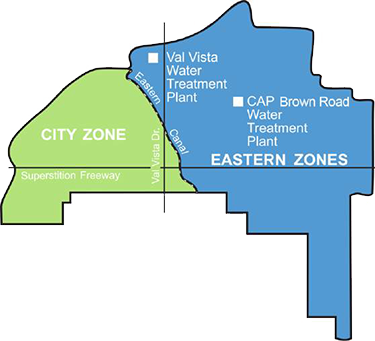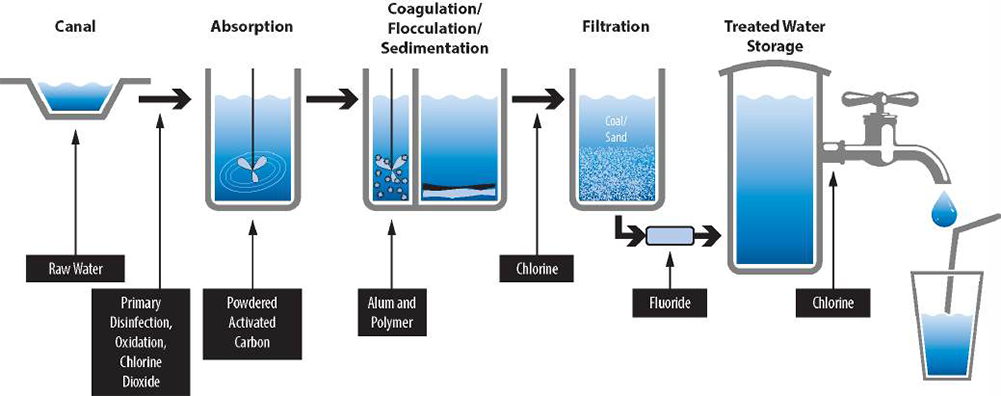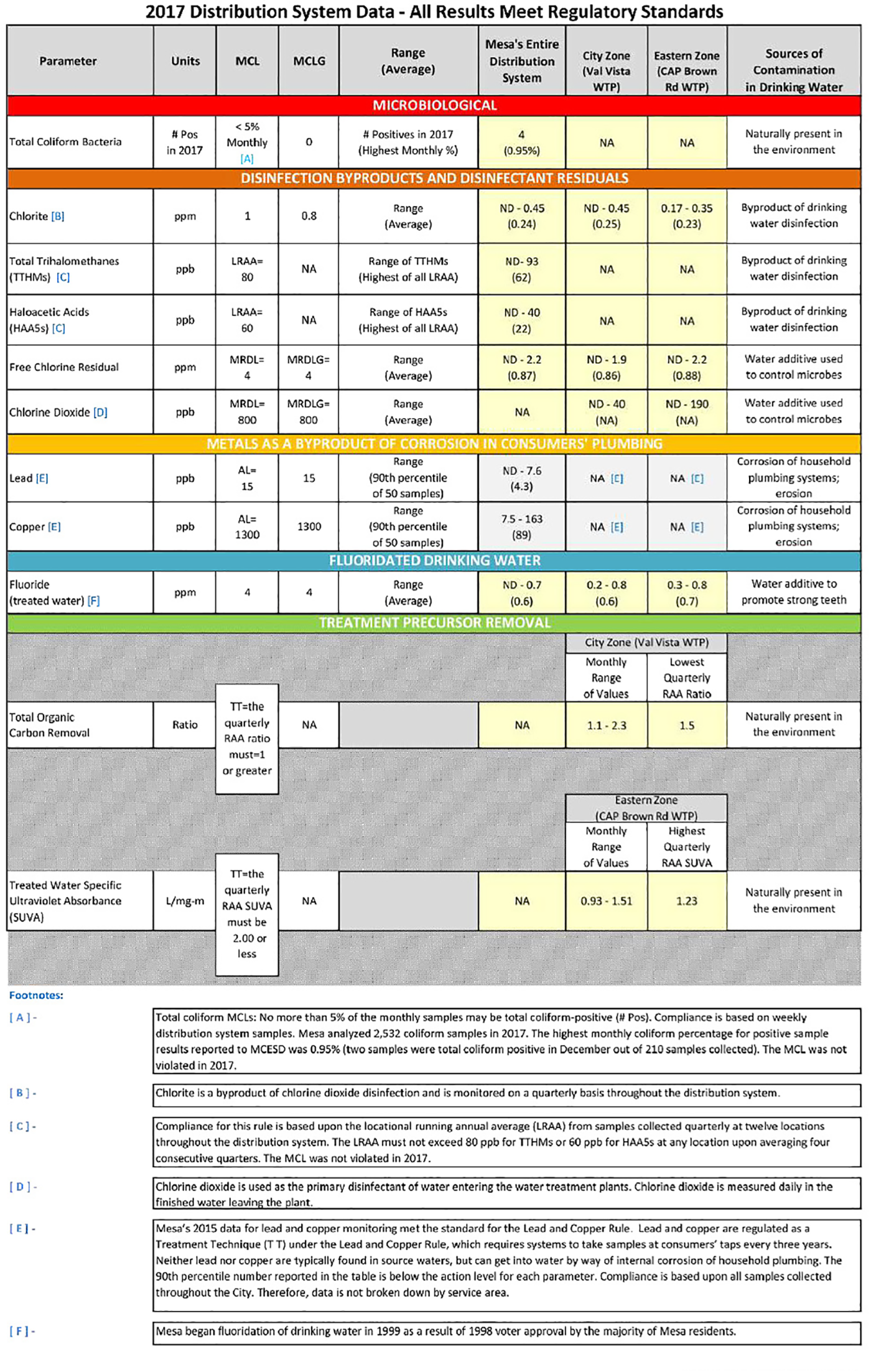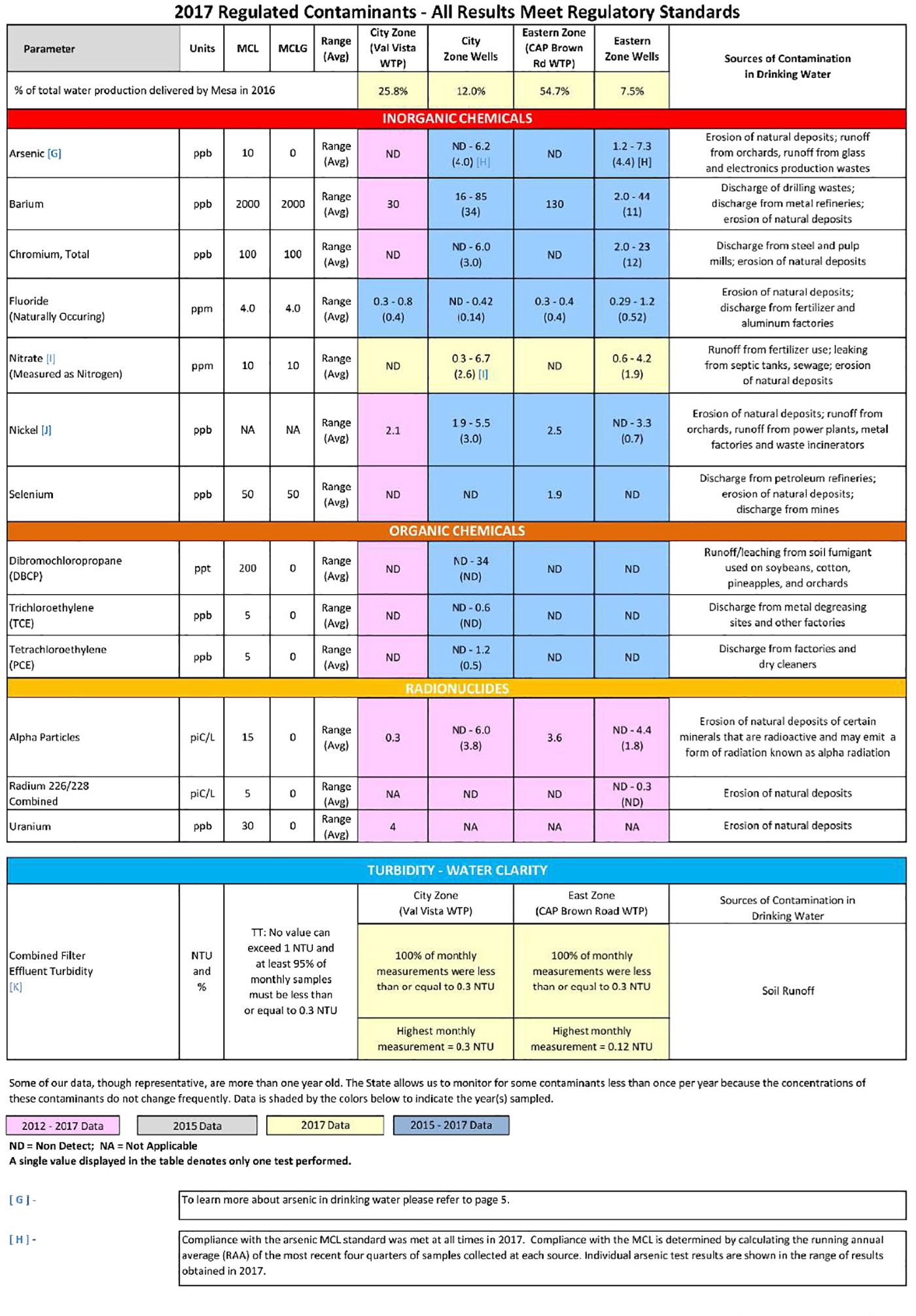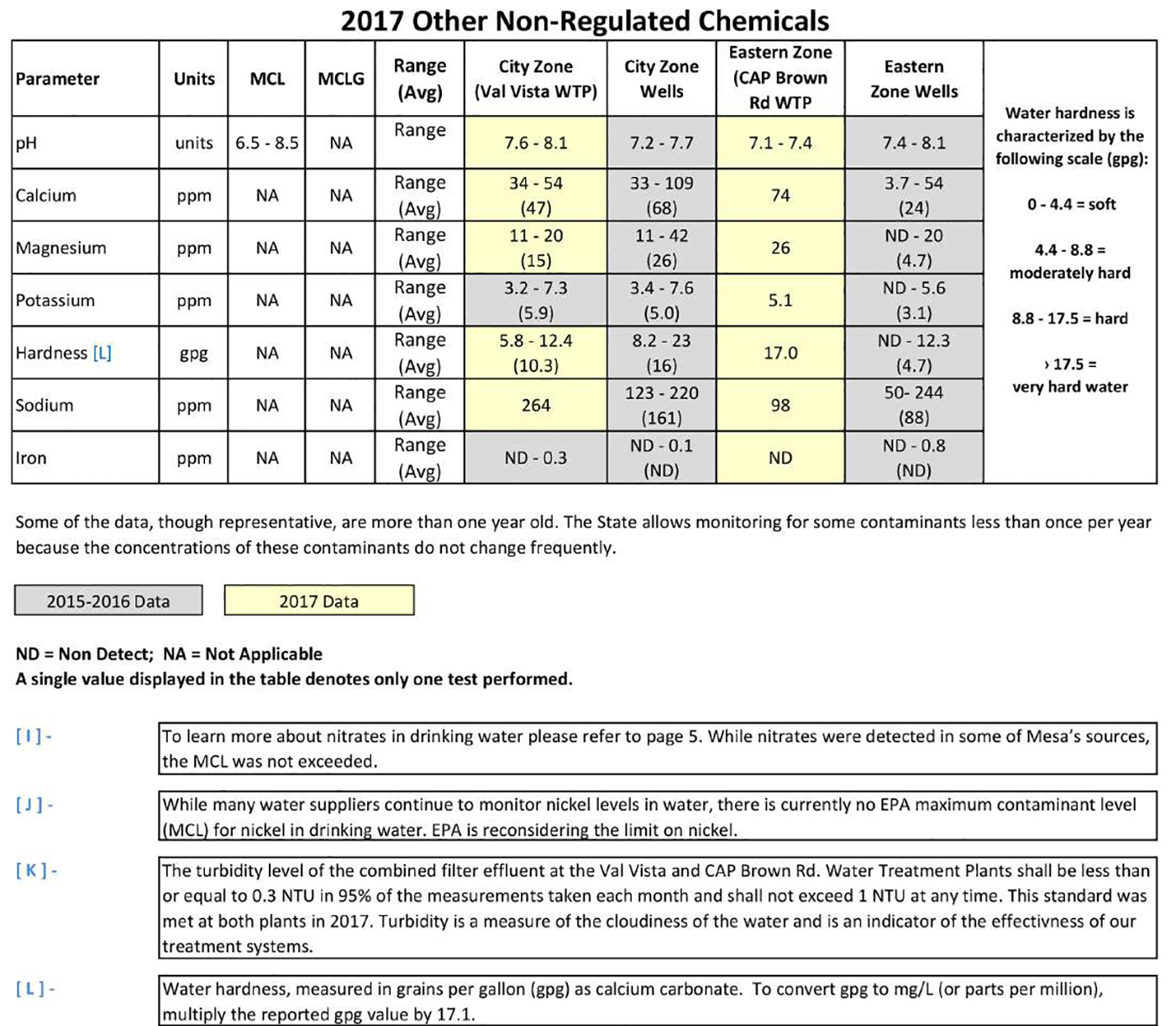ADDITIONAL INFORMATION ABOUT NITRATE, LEAD, RADON AND ARSENIC
Nitrate - Nitrate in drinking water at levels above 10 ppm is a health risk for infants of less than six months of age. High nitrate levels in drinking water can cause blue baby syndrome. Nitrate levels may rise quickly for short periods of time because of rainfall or agricultural activity. If you are caring for an infant, you should ask for advice from your healthcare provider. Nitrates are monitored annually in both groundwater and finished surface water sources. None of Mesa’s water sources exceed the EPA’s limit for nitrate (measured as nitrogen) set at 10 ppm. Monitoring results can be found in the table
below.
Lead and Copper - If present, elevated levels of lead can cause serious health problems, especially for pregnant women and young children. Lead in drinking water is primarily from materials and components associated with service lines and home plumbing. The City of Mesa is responsible for providing high quality drinking water, but cannot control the variety of materials used by homeowners in plumbing components. When your water has been sitting for several hours, you can minimize the potential for lead exposure by flushing your tap for a minimum of 30 to 60 seconds before using water for drinking or cooking. If you are concerned about lead in your drinking water, you may want to have your water tested. Information on lead in drinking water, testing methods, and steps you can take to minimize exposure is available from the Safe Drinking Water Hotline or at
www.epa.gov/your-drinking-water/safe-drinking-water-hotline. Mesa monitored for lead and copper in 2015 at 50 homes throughout the community. The action levels established by EPA are 1300 parts per billion (ppb) for copper and 15 ppb for lead. Compliance with this requirementis based on 90% of the samples being below the action levels. From the samples taken in 2015, the 90th percentile value for copper was 89 ppb and for lead 4.3 ppb. The action level for lead and copper was not exceeded in any of the 50 samples collected. Mesa will test for lead and copper in residential plumbing again in 2018 to comply with the EPA Lead and Copper Rule. Monitoring results can be found in the table
below.
Radon - Radon is a radioactive gas found throughout the U.S. that you cannot see, taste or smell. Radon can move up through the ground and into a home through cracks and holes in the foundation, building up to high levels. Radon can also get into indoor air when released from tap water from showering, washing dishes and other household activities. Compared to radon entering the home through soil, when it enters the home through tap water it will, in most cases, be a small source of radon in indoor air. Radon is a known human carcinogen. Breathing air containing radon can lead to lung cancer. Drinking water containing radon may also cause increased risk of stomach cancer. If you are concerned about radon in your home, test the air in your home. Testing is inexpensive and easy. You should pursue radon removal for your home if the level of radon in your air is four picocuries per liter of air (pCi/L) or higher. There are simple ways to fix a radon problem that are not costly. For additional information, call your state radon program or call EPA’s Radon Hotline at
(800) SOS-RADON.
Arsenic - Some of Mesa’s drinking water sources contain low levels of arsenic, a naturally occurring metal. Beginning in January 2006, allowable arsenic levels were reduced from 50 ppb to 10 ppb. The EPA determined this standard by balancing the current understanding of arsenic’s possible health effects against the costs of removing it from drinking water. The EPA continues to research the health effects of low-level exposure to arsenic. Some people who drink water containing arsenic in excess of the MCL over many years could experience skin damage or problems with their circulatory system and may have an increased risk of getting cancer. Mesa did not exceed the MCL for arsenic in any water delivered to customers in 2017. Monitoring results can be found in the table
below.

